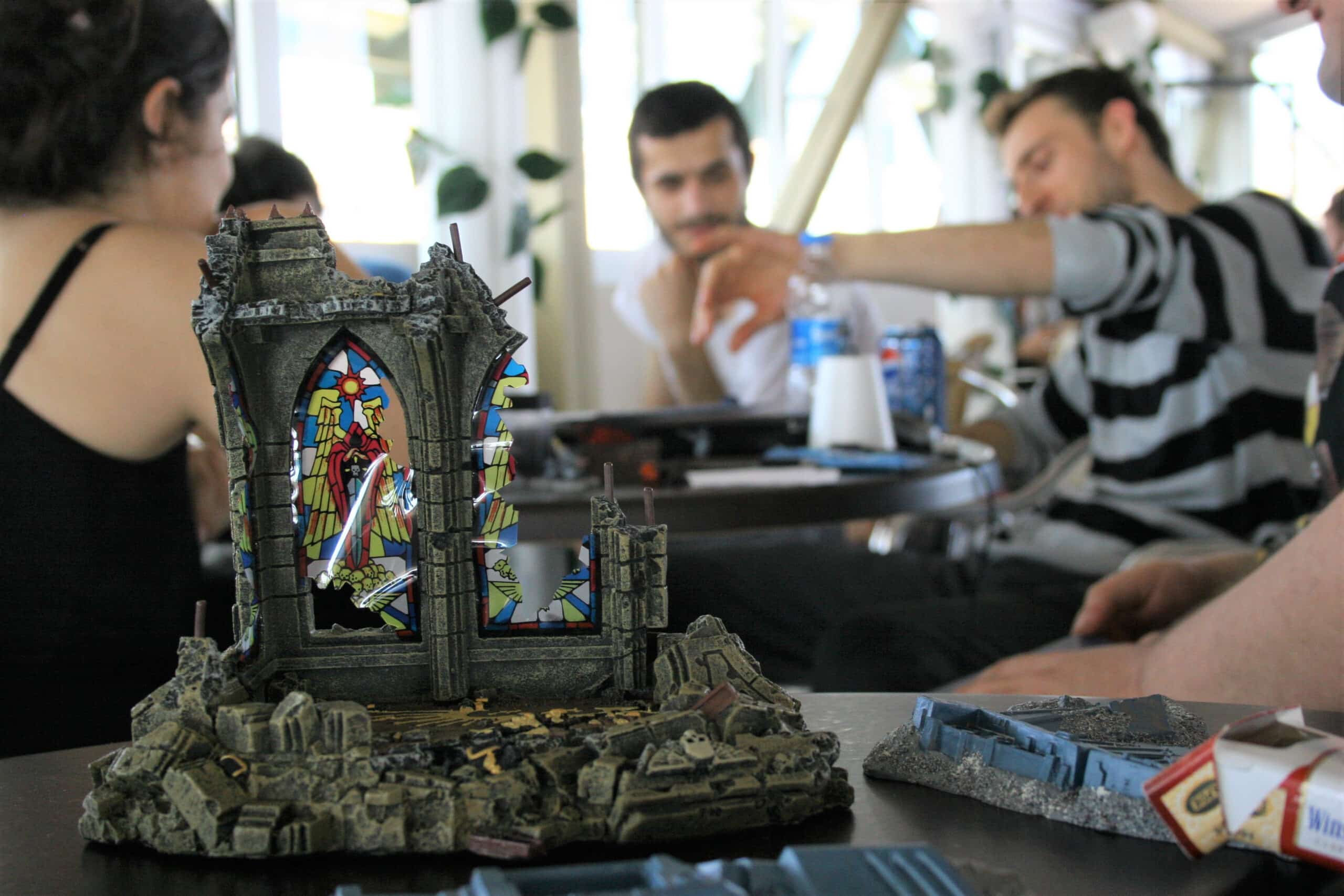In the previous articles, we have discussed how to create a great atmosphere for roleplaying and how to engage in immersive story telling. But how do you get your players to actually start roleplaying? Here are five tips that could help you along the way!
1. Talk to your players
If you are running a session zero*, ask your players how much roleplaying they want to have in their games. Some groups love intrigue and NPC interactions, while other are more into hack-and-slash fighting or problem-solving. All of this is great fun, but it is good for the DM to know what their players prefer, since they can then tailor the adventures to suit the group. If the players like roleplaying, add plenty of NPCs for their characters to interact with!
It is especially important to explain the roleplaying aspect of the game to new players. Most people who has never played roleplaying games before tend to believe that it is similar to a computer game, with quests and rewards. While this is partly true, the roleplaying part is often missing in computer games. In fact, a lot of new players doesn’t realise that they have to act like their characters, not only describe what their characters are doing.
* A session zero is a meeting that takes place before the adventure or a campaign starts. This is an opportunity to discuss character options, expectations, rules. This is also a good time to ask players about what they are comfortable with, especially when it comes to horror games, and establish boundaries.
2. Lead by example
Some players are shy and might be reluctant to try to roleplay because they are afraid that they will make a fool out of themselves. This is especially true for new players, which is perfectly understandable. The easiest way to break the ice for them, is to do exactly that yourself as a DM. And you don’t have to be a professional voice actor to accomplish this! But adding a quirky accent or body language, such as squinting at your players when you address them as an NPC, will make it more fun for everyone around the table – and it can help shy or new players come out of their shell. The more people who begin roleplaying and acting around the table, the easier it becomes for the rest to join in.
You don’t have to stay in character for the entire evening or if it gets too tiresome. Using an extremely shrill voice for an NPC an full session will leave you tired and hoarse the day after, and although it can be fun for the first part of the evening, your players will eventually get a little bit tired off it. Therefore, it is okay to slide in between roleplaying NPCs and describing them to your players.
For example, if you have established that a certain NPC has a thick Scottish accent and he is a little bit slow on the uptake, you can describe the encounter instead of roleplaying it: “The innkeeper listens carefully to your question and stares at you for a long moment while he processes the information. He replies to your question in a heavy Scottish accent that is nearly impossible to understand.”
3. Nudge your players into roleplaying
One of the easiest way to get your players to roleplay is by nudging them into roleplaying by simply asking them what they say or do.
For example, say that the group have arrived at the city gate and the characters’ plan is to try to convince a guard to let them through. Instead of letting the players roll a Persuasion skill check, ask the players what their characters will say to the two guards who are standing on either side of the gate and are looking bored. When the players have described what they say, then let them roll Persuasion to see how believable their story is. (As a DM, you can even completely skip asking for a skill check if the players do a good job at roleplaying and you want to reward them.)
4. A fair game for everyone
Not everyone is equally good at roleplaying or acting – and this is perfectly okay! While it can lead to funny encounters and laughs at the table, make sure to stay on the right side. Teasing a friend that you have known for a long time for their awful attempt at copying an accent is one thing, but mocking new players with little experience of the game is crossing the line.
All people around the table have an equal responsibility to make sure that everyone is enjoying the game, but as a DM you are the leader and can interrupt banter or uncomfortable situations by simply moving the story forward. If you are worried if joking or teasing went too far during a session, take a break and talk to the player alone, or check so that everything is okay the day after.
5. Reward good roleplaying!
The best way to encourage your players to engage in roleplaying is to reward them. If they engaged with an NPC successfully, let the NPC react to them and share information. This could be useful details that are directly related to the adventure and main story line, such as background information about the main villain or rumours that might warn and prepare the characters about what await them. But it could also be information about the NPCs themselves, their background story, and relationship with other NPCs, which in turn is great for worldbuilding. In addition, NPCs who are treated well could offer the characters discounts on lodging, food, or equipment.
Give your players brownie points and award one extra experience point for the session’s best roleplaying interaction. This gives one person the possibility to shine, and as a DM you can show your players that you encourage roleplaying around the table.

